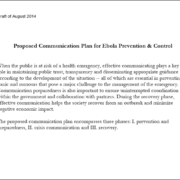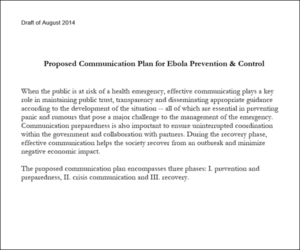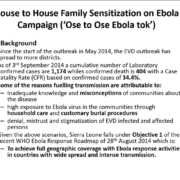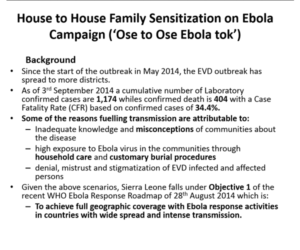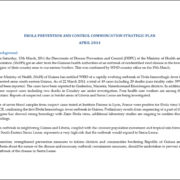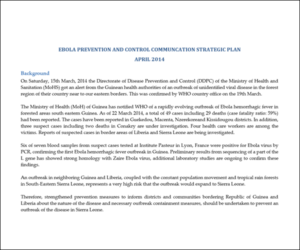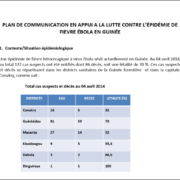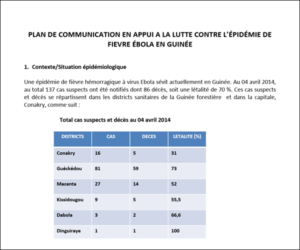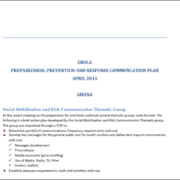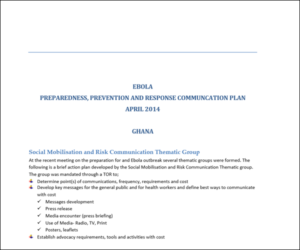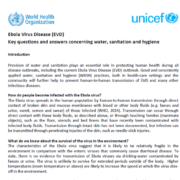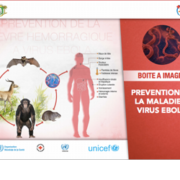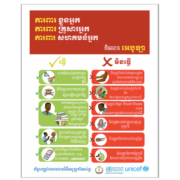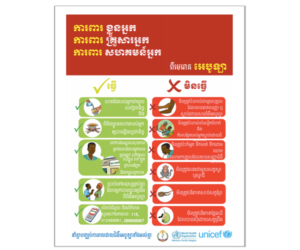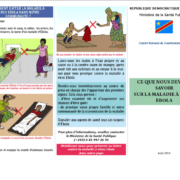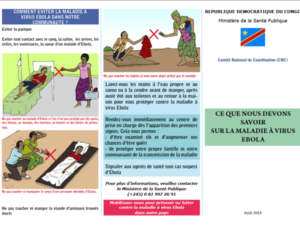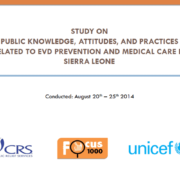House To House Ebola Sensitization Strategy for Sierra Leone
/in Strategies and Plans UNICEF Sierra Leone English Preparedness /by Myriam DemsResource Type(s)
Topic(s)
Language(s)
Country(ies)
Source(s)
Ebola Communication Plan for Sierra Leone
/in Strategies and Plans UNICEF Sierra Leone English Planning /by Myriam DemsResource Type(s)
Topic(s)
Language(s)
Country(ies)
Source(s)
Plan de Communication pour Ebola en Guinée Conakry
/in Strategies and Plans UNICEF Guinea Français Planning /by Myriam DemsResource Type(s)
Topic(s)
Language(s)
Country(ies)
Source(s)
Ebola Communication Action Plan for Ghana
/in Strategies and Plans UNICEF Ghana English Planning /by Myriam DemsResource Type(s)
Topic(s)
Language(s)
Country(ies)
Source(s)
Ebola Virus Disease (EVD) Key questions and answers concerning water, sanitation and hygiene
/in Fact Sheet UNICEF, World Health Organization Global English /by Marla Shaivitz | Health Communication Capacity Collaborative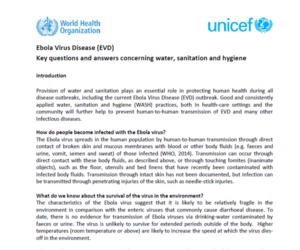 Provision of water and sanitation plays an essential role in protecting human health during all disease outbreaks, including the current Ebola Virus Disease (EVD) outbreak. Good and consistently applied water, sanitation and hygiene (WASH) practices, both in health-care settings and the community will further help to prevent human-to-human transmission of EVD and many other infectious diseases.
Provision of water and sanitation plays an essential role in protecting human health during all disease outbreaks, including the current Ebola Virus Disease (EVD) outbreak. Good and consistently applied water, sanitation and hygiene (WASH) practices, both in health-care settings and the community will further help to prevent human-to-human transmission of EVD and many other infectious diseases.
Ebola Virus Disease (EVD) Key questions and answers concerning water, sanitation and hygiene
Resource Type(s)
Language(s)
Country(ies)
Source(s)
Boîte à images – Guide de l’animateur – Ebola
/in Training UNICEF, World Health Organization Côte d'Ivoire Français General Aid Workers /by Myriam Dems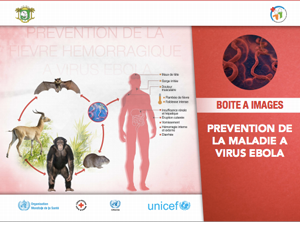 Guide détaillé, inculant illustrations, pour l’animateur d’une formation portant sur le thème de la maladie à virus ebola.*
Guide détaillé, inculant illustrations, pour l’animateur d’une formation portant sur le thème de la maladie à virus ebola.*
Version: Juin 2014.
Resource Type(s)
Topic(s)
Audience(s)
Language(s)
Country(ies)
Source(s)
Ebola Dos and Don’ts – Cambodia
/in Poster UNICEF Cambodia Khmer Prevention General Public /by Myriam DemsResource Type(s)
Topic(s)
Audience(s)
Language(s)
Country(ies)
Source(s)
“Ce que nous devons savoir sur la maladie à virus ebola”
/in Brochure UNICEF Democratic Republic of the Congo Français Community /by Myriam DemsResource Type(s)
Audience(s)
Language(s)
Country(ies)
Source(s)
Study on Public Knowledge, Attitudes, and Practices Related to EVD Prevention and Medical Care in Sierra Leone
/in Research UNICEF Sierra Leone English Data /by Jenn Weiss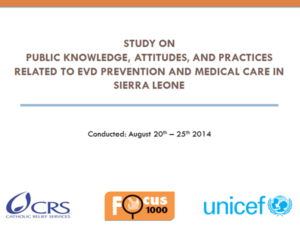 Full PowerPoint presentation on August 2014 KAP survey in Sierra Leone. Objectives of survey were to:
Full PowerPoint presentation on August 2014 KAP survey in Sierra Leone. Objectives of survey were to:
1. Examine the public’s knowledge, attitudes, and practices related to Ebola Virus Disease (EVD) in Sierra Leone
2. Identify bottlenecks to preventing the spread of EVD
3. Use the study to inform evidence-based strategies in preventing the transmission of EVD and caring for those already infected and affected by the epidemic

The Ebola Communication Network was originally developed by the Health Communication Capacity Collaborative (Cooperative Agreement #AID-OAA-A-12-00058) and expanded under Breakthrough ACTION (Cooperative Agreement #AID-OAA-A-17-00017) both under the leadership of Johns Hopkins Center for Communication Programs. This website is now maintained by Johns Hopkins Center for Communication Programs and its contents are the sole responsibility of CCP. The contents of this website do not necessarily reflect the views of USAID, the United States Government, or Johns Hopkins University.

